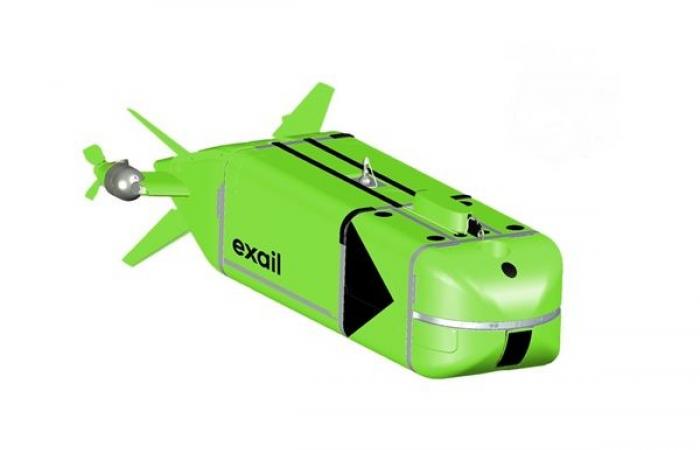Unveiled in February 2022, the ministerial strategy for controlling the seabed plans to provide the French Navy with means intended to allow it to intervene at a depth of 6,000 meters. And this while, via the Undersea Intervention Group [GISMER] of its Expert Center in human diving and underwater intervention [CEPHISMER]it only had equipment capable of reaching “only” 2000 meters depth.
To reclaim this capacity for intervention in the deep sea that it lost more than forty years ago, the French Navy has carried out several missions called “Calliope” in order to develop specifications for its future equipment while allowing its sailors to acquire the know-how necessary for handling, implementing and maintaining robots [ROV] and autonomous drones [AUV] submarines.
Secondly, there is question of the French Navy being able to use systems capable of operating at – 6,000 meters, within the framework of cooperation established with the French Research Institute for the Exploitation of the Sea [IFREMER] and the National Center for Scientific Research [CNRS]. This is the whole challenge of the announced modernization of the Nautile submarine, which will ultimately remain in service until 2035.
Finally, by 2028, the French Navy should have its own AUVs and ROVs intended to allow it to operate at a depth of 6,000 meters. This timetable could be accelerated. In any case, this is what the order just notified by the Directorate General of Armaments suggests. [DGA] to the Exail and Travocean companies.
Indeed, in conjunction with the General Secretariat for Investment [SGPI]the DGA announced that it had just ordered the development of “two underwater robotics systems as part of the France 2030 investment plan and the ‘Seabed Control’ program of the Ministry of the Armed Forces”.
Thus, the company Exail has been tasked with developing and producing an autonomous underwater drone while Travocean will have to concentrate on the development of a remotely operated underwater robot. These two machines “will constitute the first deep-sea capacity of the French Navy from 2026”, specified the DGA.
And she adds: “Capable of operating up to a depth of 6,000 meters and carrying payloads [capteurs, instruments de mesure et outils]these first capabilities will ensure missions contributing in particular to protecting underwater infrastructures, guaranteeing the freedom of action of our forces and preserving French interests. »
In detail, Exail will develop the A6K-M drone, which is based on the work carried out with IFREMER for the Ulyx. Having great endurance, this AUV will be equipped with sonars. “The contract also provides for the integration and qualification of the system on board metropolitan support and assistance vessels [BSAM] of the French Navy, as well as its air transportability in the A400M,” indicated the DGA.
As for the underwater robot, it will be a variation of the ROV-DeepSea from Travocean, a subsidiary of Louis Dreyfus Armateurs [LDA]specialist in the installation of submarine cables. Having to be air transportable by A400M and equipped with “high-performance” optics, it will be implemented from the chartered support and assistance building [BSAA] Jason.






